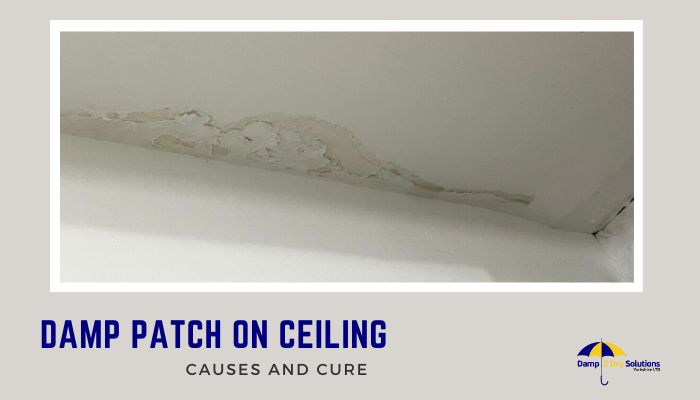A Wet patch on the ceiling is a common problem that homeowners experience. A number of factors can cause it, and the cure will depend on what caused the dampness in your ceiling in the first place.
What causes wet patch on ceiling?
Wet patch form on drywall ceilings when water has permeated through the material and remained there for an extended period of time.
If the place is on the first level of your home, it could indicate a leak in an upstairs appliance or a pipeline that runs through that area. If it’s on your second level, the most likely cause is a leaking roof.
Over time, most residential roofing materials fade and degrade. Water has a tendency of breaking through and infiltrating your home when exposed to the outdoors, particularly heavy rain or snow.
It will ultimately come through the roof and into your living space, whether you have an attic or not. The first indicator that something is happening is wet marks on your ceiling.
List of possible causes damp patch on ceiling
Here is a summary of some of the most common causes of damp patches on ceilings:
- Plumbing Leak Above – For Example, a Bathroom Leak or a Shower Leak Through the Ceiling
- Condensation Issues in the Room
- Condensation Issue in the Loft from Above
- Storm damage resulting in a roof leak
- Frozen Pipe Leak – especially during the winter
- Above: Central Heating Leak or Radiator Leak
- Damp in the property is a problem.
- Leak from the above-mentioned flat – your ceiling, their floor
- The property has a high relative humidity.
- Leak in the Water Tank
Dealing with damp on ceiling
It is critical to remember that if you discover a moist area, it may be merely one of the symptoms of a deeper and more serious problem. As a result, you should proceed with caution while approaching the water stein: first, identify and address the cause of the problem.
Step 1: Locate and repair the source of the problem.
Your first objective should be to identify the root of the problem. If the wet patch was not caused by a water leak, you should investigate other areas of your home, such as windows, plumbing, and pipes. An upstairs bathroom or a leaking radiator could be the problem.
There are many instances where the origin of a water stain on a ceiling is not apparent: water does not always fall from the sky like rain. Of course, the position of the ceiling patch can help you, but it is strongly recommended that you seek professional assistance, especially for this phase.
Whatever the source of the problem is, it must be resolved. Damp spots will recur or develop if the source is not located and repaired.
Step 2: Remove the patch.
After you’ve resolved the primary issue, you can address the wet patch. The use of bleach solvent is the finest technique to clean the region. Wearing goggles and gloves is required for this procedure.
You should use a ladder to reach the damp spot and administer the solution with a clean sponge. Then, clean the damp surface with a clean rag and wrap the ceiling with painter’s tape once totally dry (a few days is preferred).
STEP 3: Apply a stain-blocking primer base coat.
After the stain has dried completely, the best way to cover it is with an oil-based, mould-resistant, stain-blocking primer. Because they are water-soluble, interior latex paints are a bad choice. Water is insoluble in mould-resistant, stain-blocking primers, and water stains are blocked.
Read also – Best Waterproofing Materials for your Building
STEP 4: Apply ceiling paint to the affected area.
To make your ceiling look brand new and the colour hue consistent, paint over the prepped area. You can now apply practically any ceiling paints over the oil-based primer. Your number one priority should be to find paint that matches the colour of the remainder of your ceiling.
Seeking expert help to avoid and repair wet patches is the most prudent thing to do. If the cause of the problem is not addressed, the spots will return and increase, causing long-term concerns in your home and, if left untreated, your health.
Fortunately, here at Damp2Dry Solutions, we work with experienced technicians who provide services to prevent, locate, and repair moisture problems. Book a free damp survey Today.






